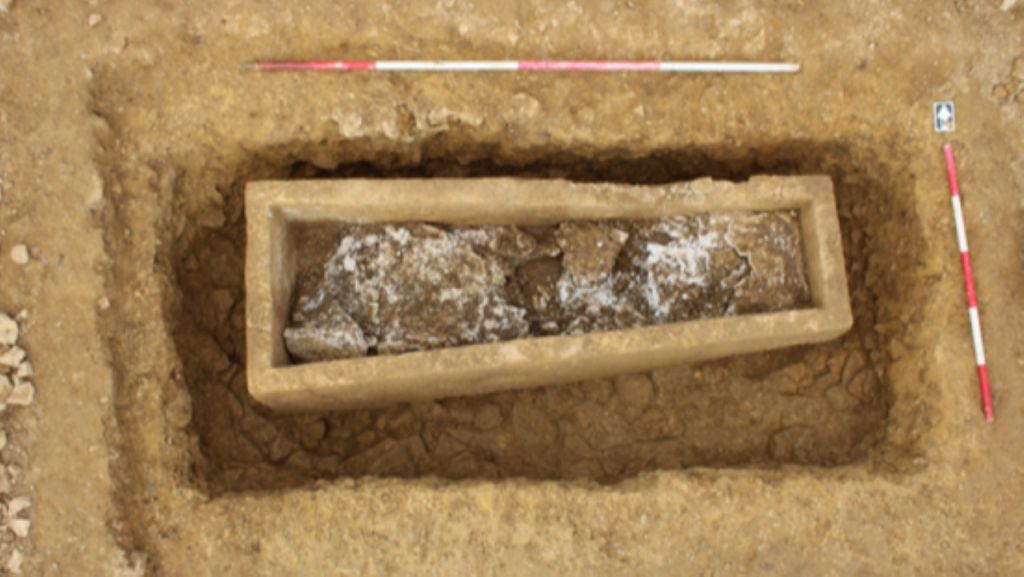The discovery of an ancient Roman cemetery during highway construction along the A47 in England offers a fascinating glimpse into the lives and burial practices of a Roman community over 1,500 years ago. The find, announced by National Highways, includes a rare stone coffin, weighing approximately 1,600 pounds and measuring 6½ feet long, alongside 23 other graves, suggesting a familial or community burial ground situated along an old Roman road. The presence of the cemetery underscores the historical significance of this particular stretch of highway, which traces its origins back to the Roman era.
The stone coffin itself presents a unique enigma. Its substantial weight is attributed to being filled with white gypsum, a mineral commonly used in plaster-making. While stone coffins are relatively uncommon in Roman Britain, with only around 50 previously discovered, the use of gypsum within the coffin raises intriguing questions. Archaeologists speculate that this practice could signify the burial of a high-status individual, possibly a wealthy member of the local community. The gypsum, while adding significant weight, also preserved an imprint of the body and the cloth it was buried in, offering valuable insights into burial customs.
Further examination of the coffin’s contents is expected to shed more light on the individual interred within. The careful removal of bones from the gypsum matrix is underway, with archaeologists meticulously analyzing any remaining fragments of cloth or other artifacts. This process will likely contribute to a more precise dating of the burial and, potentially, reveal details about the individual’s social standing and life within the Roman community.
The surrounding graves also offer valuable clues about the lives of those buried within the cemetery. The discovery of a young woman’s grave containing a collection of valuables, including glass and ceramic drinking vessels, suggests the inclusion of a dowry intended to accompany her into the afterlife. This practice further illuminates Roman burial customs and beliefs regarding the transition to the next world. The presence of drinking vessels also raises the possibility of graveside rituals or commemorative anniversaries, providing a glimpse into the social and spiritual practices of the community.
The location of the cemetery, along a known Roman road, highlights the prevalence of Roman infrastructure and settlements in the region. The A47, which connects Birmingham to Suffolk, appears to follow the route of an ancient Roman road, underscoring the historical continuity of the area. This discovery echoes other recent finds in the UK, including a 2,000-year-old Roman road uncovered in London, demonstrating the rich archaeological landscape of Britain and the enduring legacy of Roman occupation.
The ongoing archaeological investigation of the Roman cemetery promises to unveil further details about the lives and burial practices of this ancient community. The analysis of the skeletal remains, artifacts, and the unique gypsum-filled coffin will contribute significantly to our understanding of Roman Britain and the cultural landscape of the region during that period. This discovery underscores the importance of archaeological investigation in highway construction projects, allowing for the preservation and study of invaluable historical treasures.

